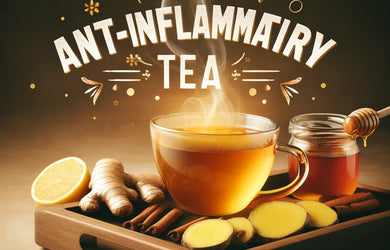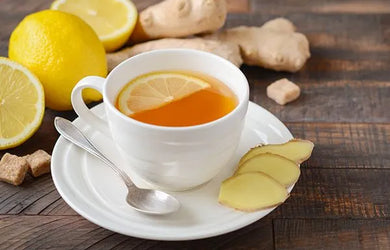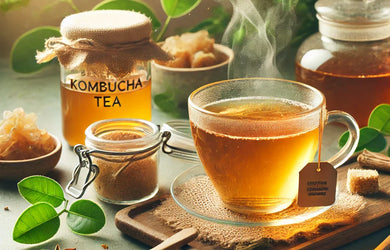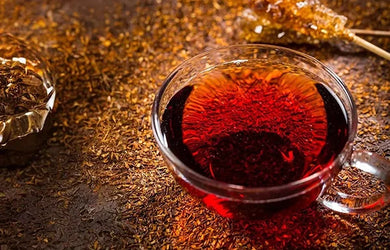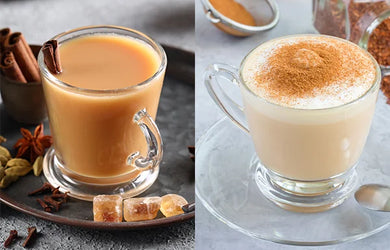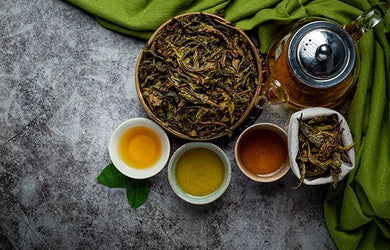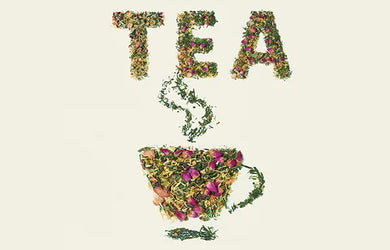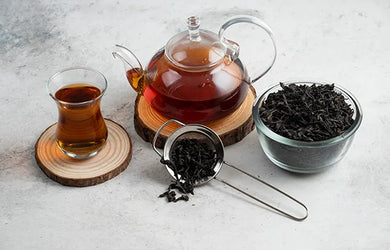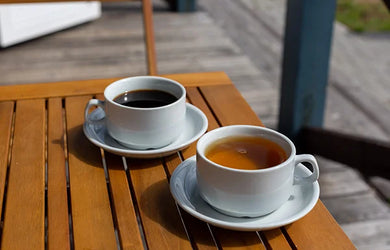even though green tea is so popular, it’s not common knowledge that there are several kinds of green tea. you might often hear people say “isn’t all green tea the same?” or "i only know of matcha green tea!". so, we decided to clear things up!
to help you explore these wonderful options, we’ve curated a list of the top 8 types of green tea you should try. go through the list and see how many you already know of…beyond the popular ones like matcha and sencha.
but before we get to the list, let’s taste a bit of green tea history!

history of green tea
about 5000 years ago, there was an emperor named shennong in china. this mythological figure was not necessarily one person, he might be a representation of the collective knowledge of that generation (he’s considered the god of medicine and agriculture).
the story goes that one day, while the emperor was resting under a tree, leaves from nearby plants fell into his cup of hot water. he took a sip and liked the taste of the new drink which we now know as green tea.
this discovery would have led to tea cultivation, as we can see from records starting around the han dynasty (206 bc onwards). during that period green tea was mostly used for its medicinal properties. the reasons for its consumption shifted to pleasure during the tang dynasty (around 600 ad). however, its cost kept it out of reach for commoners until the 14th century. until then, only the rich and royals could access it.
fast forward to the 19th century! around this time green tea crossed borders with the europeans and reached the western world. and guess what? it didn’t fail to impress them too! so much so that the british designated its oxidised version their national drink. tea’s journey didn’t stop there; it continued to america with the english travellers.
from then to now, green tea’s popularity has continuously increased – today it’s enjoyed by people globally.
top 8 green tea varieties
sencha
this green tea variety is from the land of the rising sun. japan produces some of the most famous types of green tea, and sencha is one of them. it’s also the most popular green tea variety in japan.
sencha comes in several forms and each variety has a unique flavour. the flavour is developed in various ways, for example, by varying the steaming level, growing in shade or extended storage. these flavours can have grassy, sweet or astringent notes, depending on the variety of sencha and how it’s brewed.
matcha
this green tea variety is certainly the most talked about and used in various recipes from tea to ice cream or anything imaginable. matcha’s rich flavour, intensified green colour and superior nutritional profile add to its appeal and popularity.
matcha is made differently in comparison to other types of green tea, and that contributes to its appealing attributes. it’s made by finely grinding dried shade-grown tea leaves. the resulting powder is whisked into hot water or milk to make this frothy beverage. so instead of steeping the leaves, you consume the entire leaf and maximise the benefits and flavour.
gunpowder
when you see tea leaves rolled into tiny balls like gunpowder, it’s most likely the famous gunpowder green tea. instead of loose leaves like most types of green tea, they are rolled into tight pellets.
when you steep it, the gunpowder pearls unfurl, releasing a strong, grassy taste with subtle flavours of smokiness and nuttiness. the flavour works perfectly in moroccan mint tea, making this tea very popular in north africa.
longjing
unlike the previous one on our list, longjing’s name has nothing to do with how it looks. this green tea variety, known as "dragon well", has several legends behind its name.
this pan-fried tea is shaped like a spear, has a light colour similar to jade, and tastes mellow and slightly roasted with notes of almonds and herbs. it has a nice balance of sweetness and strength.
gyokuro
gyokuro tea, known as "dew pearl" in japanese, is a prized green tea variety from kyushu. it’s grown in the shade, and then its buds and first leaves are spring–harvested, dried and steamed.
this process results in high chlorophyll and theine but low tannins, giving gyokuro a mild, sweet and umami-rich flavour. its distinctive aroma is unique and reminiscent of seaweed.
hojicha
next on our list of different types of green tea is hojicha. it’s a unique japanese green tea that is completely transformed during processing and starts resembling black tea due to its colour change.
the colour changes to rich brown after the leaves are roasted, and they also get a toasty and mellow flavour.
bi luo chun
bi luo chun tea is made from delicate buds and young leaves that are pan-fried to prevent oxidation. they are then carefully hand-rolled into their distinctive curled shape. another distinguishing feature of this tea is the presence of fine hair all over the tea leaves, which gives a slightly cloudy look to brewed tea.
this tea is celebrated for its rich, vegetal taste with aromas varying from fruity to floral. it finishes cleanly with a lasting sweetness.
jasmine green tea
last but one of the most popular types of green tea is jasmine green tea. it’s made using green tea leaves as a base and infusing it with the aroma of jasmine flowers.
the process begins by layering fresh jasmine blooms over the tea leaves in the evening when their scent is most intense. this infusion is repeated several times to ensure the tea gets maximum scent. the result is a gentle and mellow brew with a subtle sweetness.
health benefits of green tea
all types of green tea are loaded with flavours, aromas and numerous health benefits. beyond their refreshing taste, these teas provide essential elements that support our well-being. these green tea benefits add to the reasons for these teas' popularity.
- rich in antioxidants: all kinds of green tea contain polyphenols like catechins and flavonoids, which help combat oxidative stress and reduce free radicals in the body. these harmful molecules are linked to chronic diseases, so it’s best to control them and lower your risk.
- supports brain function: epigallocatechin gallate (egcg), a catechin present in green tea, encourages neural connections responsible for learning and memory. studies indicate that green tea consumption might enhance cognitive abilities by delaying neurodegenerative disorders. one study says that the unique combination of caffeine and l-theanine in green tea enhances focus and alertness while promoting relaxation.
- heart health protection: green tea might support blood vessels' proper functioning, protecting them from oxidative stress and inflammation. research suggests that habitual green tea intake lowers ldl ("bad") cholesterol levels and reduces heart disease risks
- weight control: while more research is required in this area, one study suggests that green tea and its active compound egcg might help deal with obesity by shedding some pounds.
what flavour does green tea have?
if you’re trying to get an answer to "what does green tea taste like?", you’ll likely get varying descriptions. that’s because green tea flavours are influenced by various factors such as region, processing methods and preparation techniques. however, there are some common flavours in different types of green tea:
- vegetal notes: a subtle hint of freshly cut grass is a frequent characteristic, especially in japanese green teas.
- salty and seaweed flavoured: gyokuro is a good example of those types of green tea with subtle notes of salt and seaweed.
- nutty delights: toasted nuts, like almonds or chestnuts, are a delightful surprise in certain green teas. this adds richness and depth to the overall experience.
- floral aroma and taste: some kinds of green tea, especially those scented with flowers, like jasmine, have a beautiful floral fragrance that translates into a subtle floral note in the taste.
- sweet flavours: some types of green tea (like sencha) have sweet flavours from the presence of l-theanine (an amino acid in the tea leaves).
conclusion
that’s our list of the top 8 types of green tea that are a must-try at least once! even if you’re not usually a tea person, these refreshing green tea varieties are great for a change.
each green tea variety has something outstanding – a fusion of flavours, fragrances and textures. we’re confident they’ll tempt you to venture beyond your regular preferences and explore new options.
if some kinds of green tea seem inaccessible in asian stores, just buy green tea online. whether you like to buy green tea bags or loose leaves, they are most likely available! so, set aside your lingering doubts and give these wonderful tea varieties a try.
faqs on types of green tea
q. what type of green tea is best?
a. all types of green tea have something outstanding to offer and it’s challenging to mark one variety as best. considering the diverse range of green tea varieties available, the choice of the best one is a matter of personal preference. popular varieties like matcha, sencha and gyokuro, each have unique characteristics that cater to different tastes and needs.
q. how many different types of green tea are there?
a. there are hundreds of kinds of green tea, with the best-known ones originating from china, japan and india. each region has unique processing styles and flavour profiles, creating a diverse range of experiences for green tea enthusiasts.
q. what kind of green tea should i drink for weight loss?
a. when considering different kinds of green tea for weight loss, it doesn't matter which specific variant you choose as they all contain catechins and caffeine that can help enhance metabolism. focus on finding a green tea you genuinely enjoy, as consistency is key to maximising the benefits. including two to three cups daily alongside a healthy diet and regular exercise can promote gradual weight loss.
q. which green tea is healthier?
a. matcha is, without a doubt, the healthier green tea variety due to its richness in nutrients. since matcha involves consuming the entire leaf, it provides increased amounts of antioxidants, caffeine, theanine and chlorophyll compared to other kinds of green tea. even sencha and gyokuro are healthy options.
1 comment
- Liquid error (sections/main-article line 115): Could not find asset snippets/comment.liquid

















